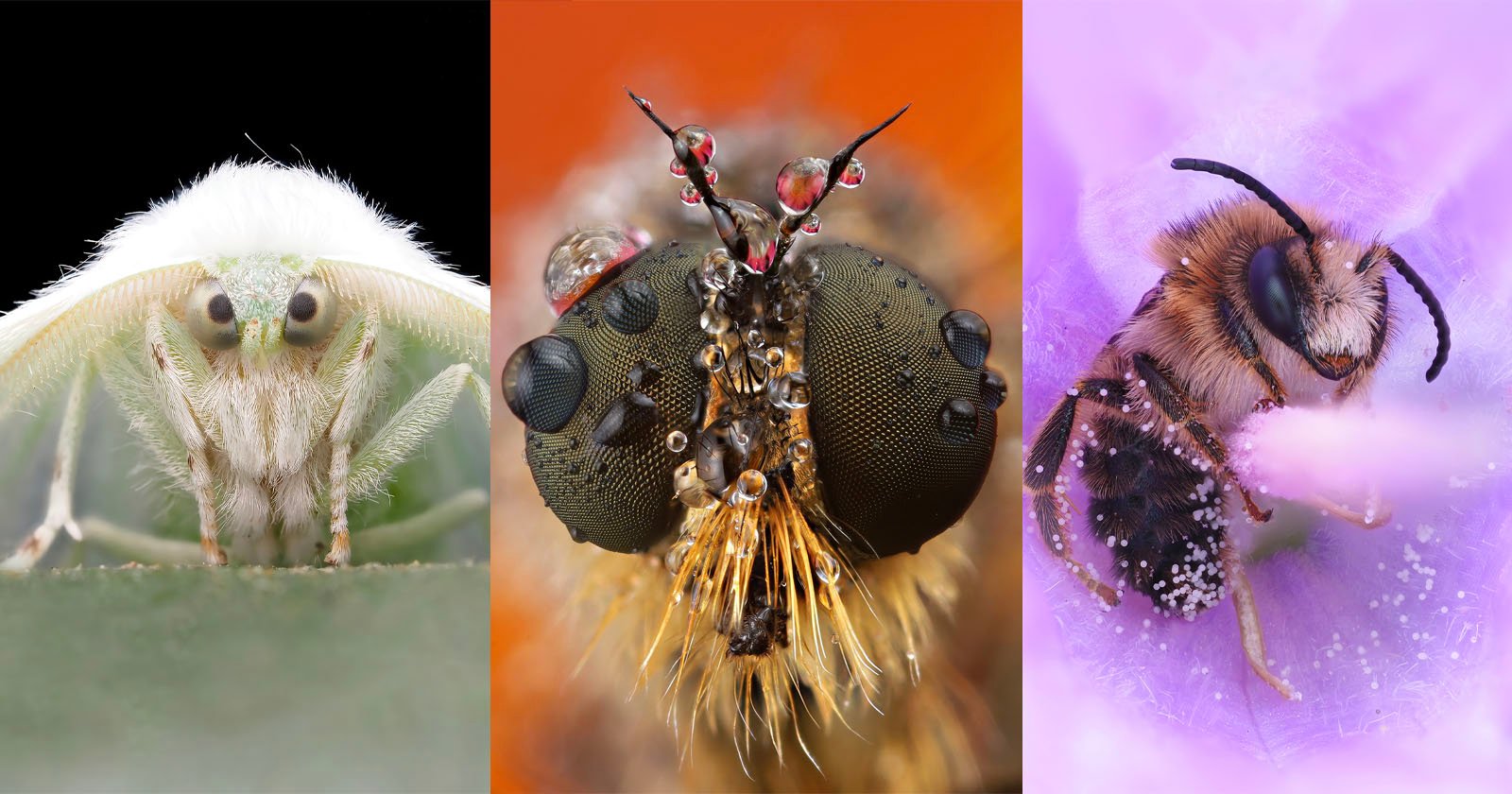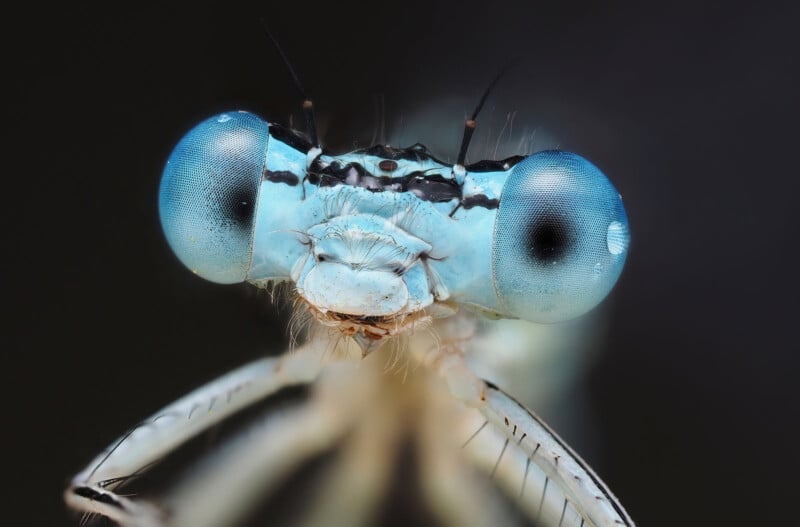 Blue Featherleg (Damselfly)
Blue Featherleg (Damselfly)
Marit van Ekelenburg turns “fear into fascination” by revealing the beauty, diversity, and ecological importance of insects and other invertebrates through macro photography.
To some, the arthropod kingdom of insects and arachnids has been unjustly vilified. In response, Ekelenburg snaps small portraits with big meaning, showing that a demure weevil, a fuzzy jumping spider, or a furry robber fly can be just as endearing as a eucalyptus-branch-clinging koala.
A Macro Manifesto
Ekelenburg’s photographic love affair began with “amateurish holiday snaps” on a smartphone camera, which led to the niche of “extreme macro.” When she began clicking in 2018, she started with a Canon but now also uses an OM-D E-M1 Mark III by OM System.
Ekelenburg often uses an M.Zuiko 90mm f/3.5 Macro IS Pro lens, which she describes as an “insect photographer’s dream.” For example, this tiny weevil, only about one-tenth of an inch, was captured via a 90mm lens and an MC-20 2.0x converter. That said, she’ll work with a wide range of optics depending on the setting and subject, ranging from 25mm to 150mm, manual or autofocus.
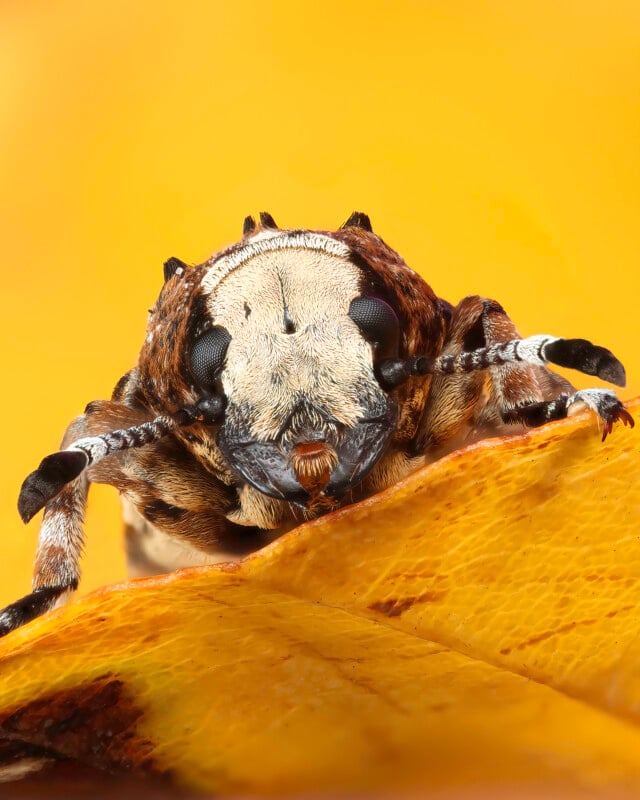 Fungus Weevil
Fungus Weevil 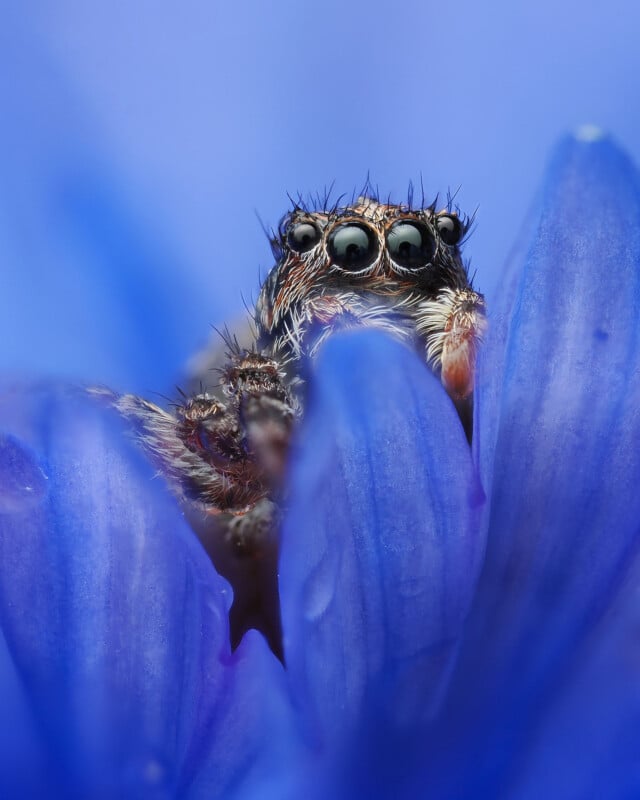 Jumping Spider
Jumping Spider
To achieve such mellow, otherworldly backgrounds, Ekelenburg uses a diffuser, a light-shaping tool that disperses light to provide the desired level of soft or dreamy illumination.
To tease out the details, she also leverages focus bracketing and stacking — a technique that refers to taking multiple photos of an insect at different focal distances, then blending them together to offer a greater depth of field. She adds final touches by balancing the colors and textures through editing software like Affinity Photo V2.
Accentuating Arthropods’ Importance
As a result of Ekelenburg’s effort and technical know-how, each small subject exudes as much personality as a human portrait, highlighting a “miraculous” natural world of seemingly limitless diversity.
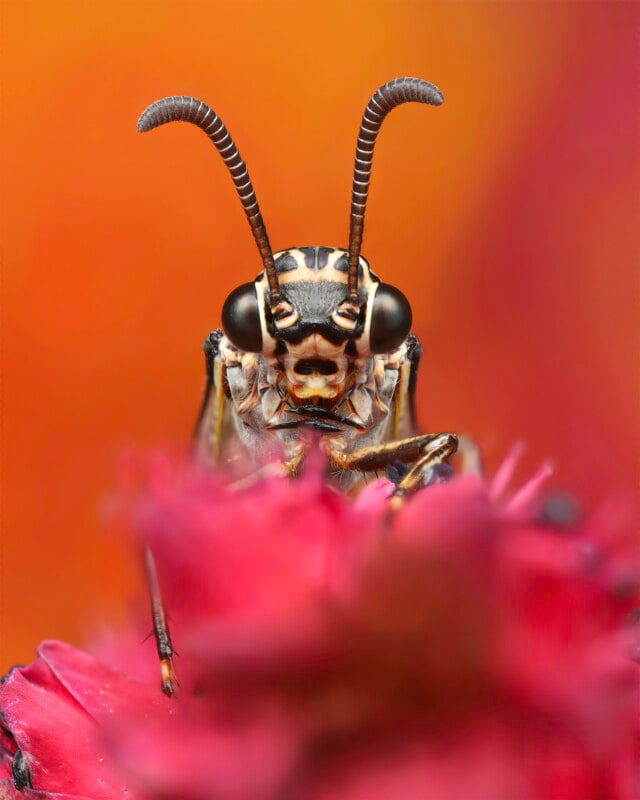 Antlion
Antlion 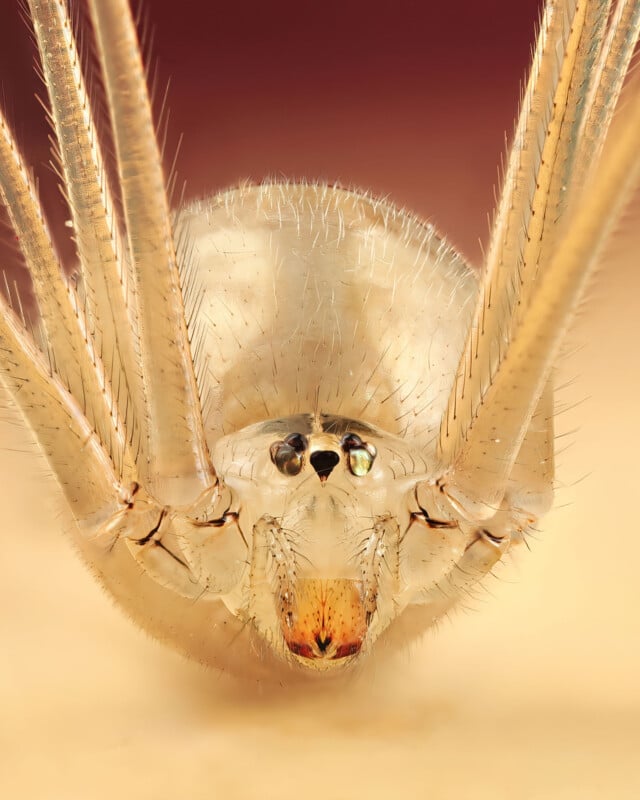 Cellar Spider
Cellar Spider
After all, nature has been at it since time immemorial. The origin of insects may be immemorial to the Earth itself; while the oldest fossils are about 400 million years old, genetic analysis suggests that insects emerged circa 480 million years ago. They evolved alongside the early terrestrial plants and helped completely change the face of the planet.
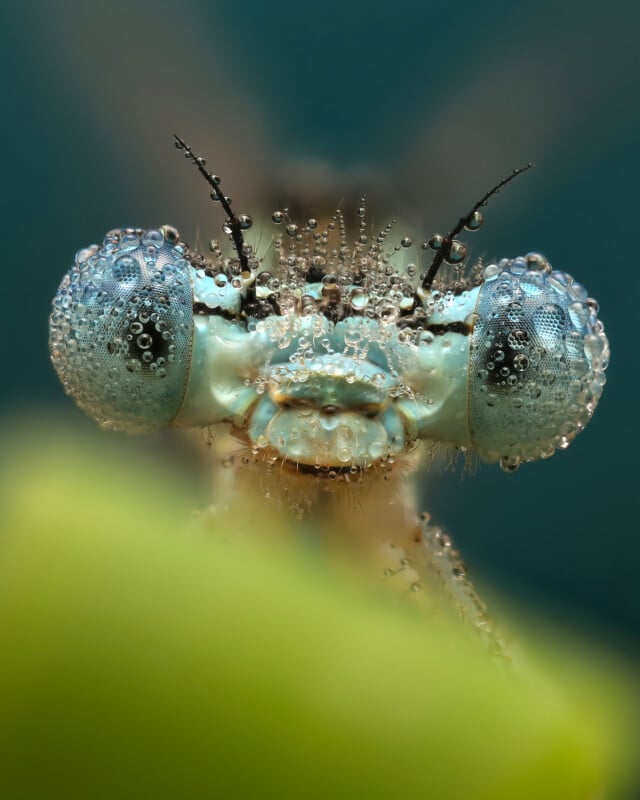 Blue Featherleg (Damselfly)
Blue Featherleg (Damselfly)
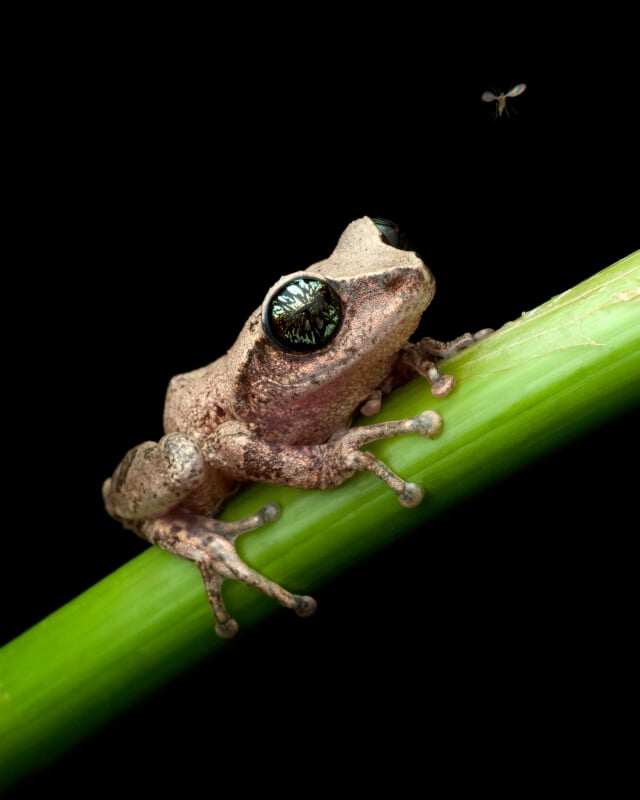 Green-Eyed Bush Frog
Green-Eyed Bush Frog
Today, insects support ecosystems in many ways. They keep Earth green through pollination, and it’s not just bees upholding global food chains: science says that “insects other than bees are efficient pollinators providing 39% of visits to crop flowers.” Insects also decompose organic matter, clear debris from water, eat mosquitoes (disease vectors), and increase crop yields by controlling weeds and pests.
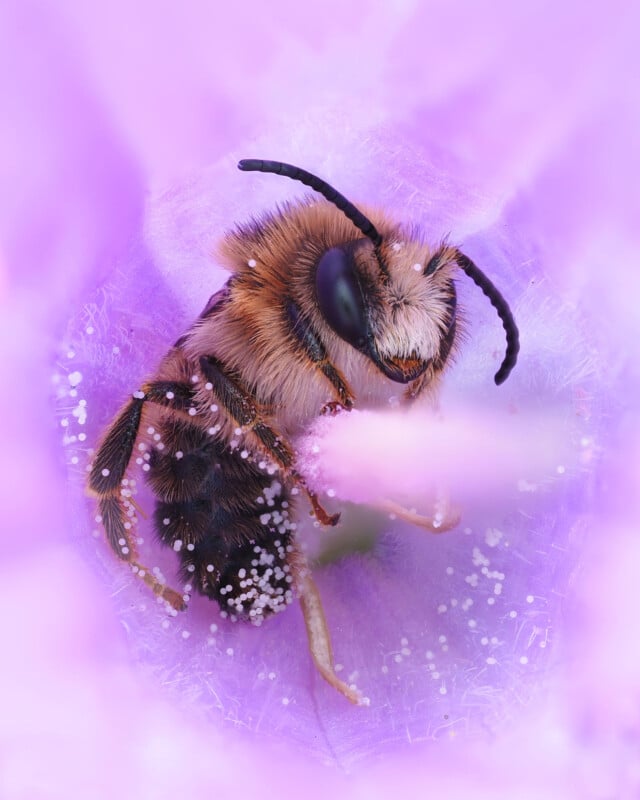 Sleeping Bee in Campanula Flower
Sleeping Bee in Campanula Flower 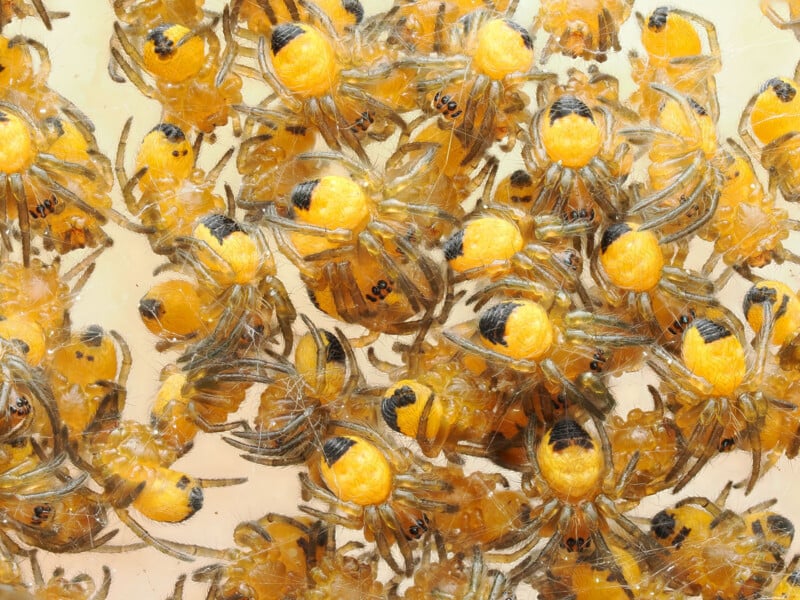 Baby Cross Spiders
Baby Cross Spiders
Arthropod abilities are just as intriguingly boundless. Pseudoscorpions are arachnids that use other insects like a taxi service. Pseudoscorpions will use their pedipalps (the appendages around their mouth) to grab onto insects like flies and beetles, hitching rides to more favorable locales, explains Ekelenburg.
For a macro photographer, patience may be the most invaluable tool because arthropods are often unpredictable. And although patience can’t be bought, it can be learned. Macro photographers must also be mindful to avoid disturbing or harming an animal or its habitat. These, and other principles, are outlined in the Ethics of Macro Photography.
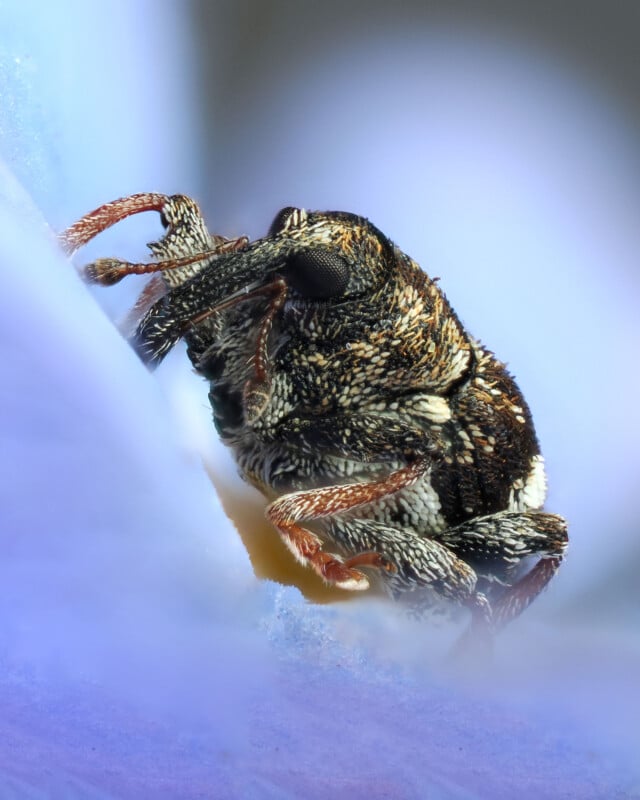 Weevil
Weevil
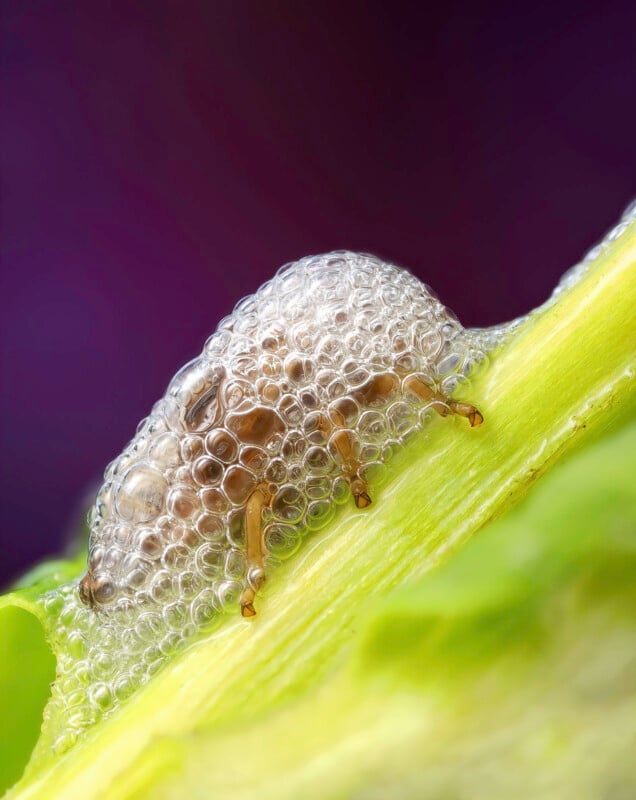 Froghopper Nymph, or Spittlebug, Creates a Froth as it Feeds (and Excretes)
Froghopper Nymph, or Spittlebug, Creates a Froth as it Feeds (and Excretes) 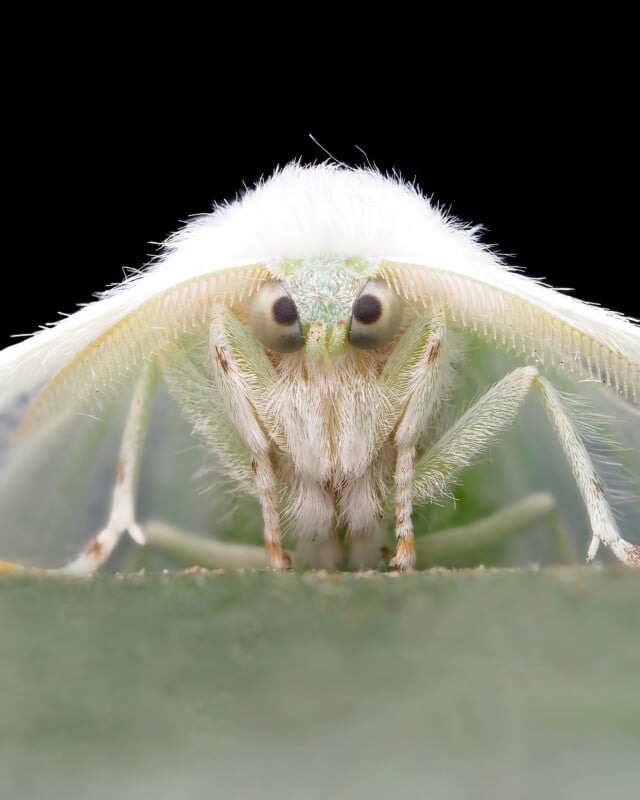 Silk Moth
Silk Moth
Being patient and mindful can yield candid shots of invertebrates’ daily lives, such as these two Chrysolina leaf beetles caught in the act of mating. The out-of-focus male can be seen in the background.
 Leaf Beetles Mating
Leaf Beetles Mating 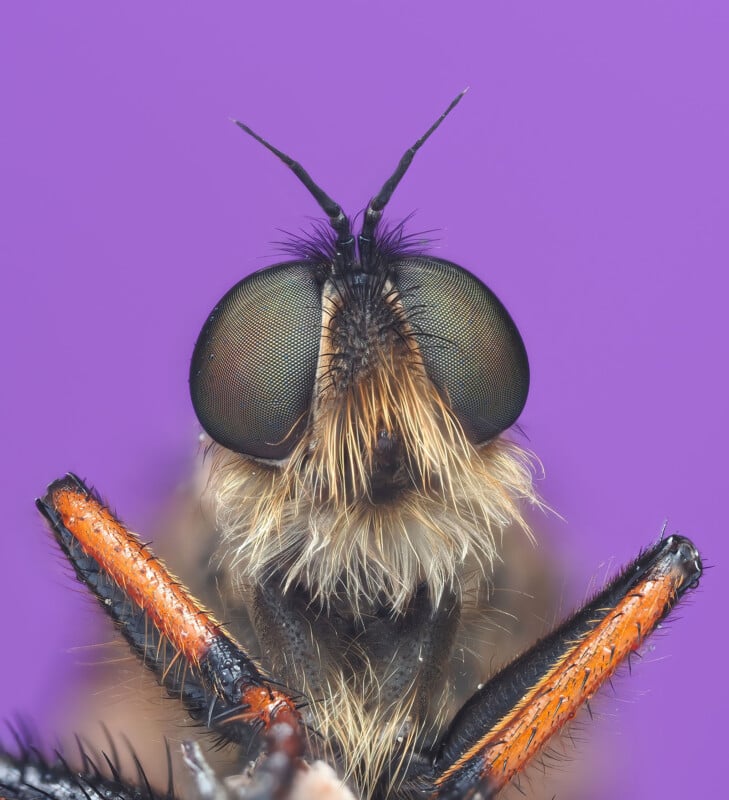 Robber Fly
Robber Fly 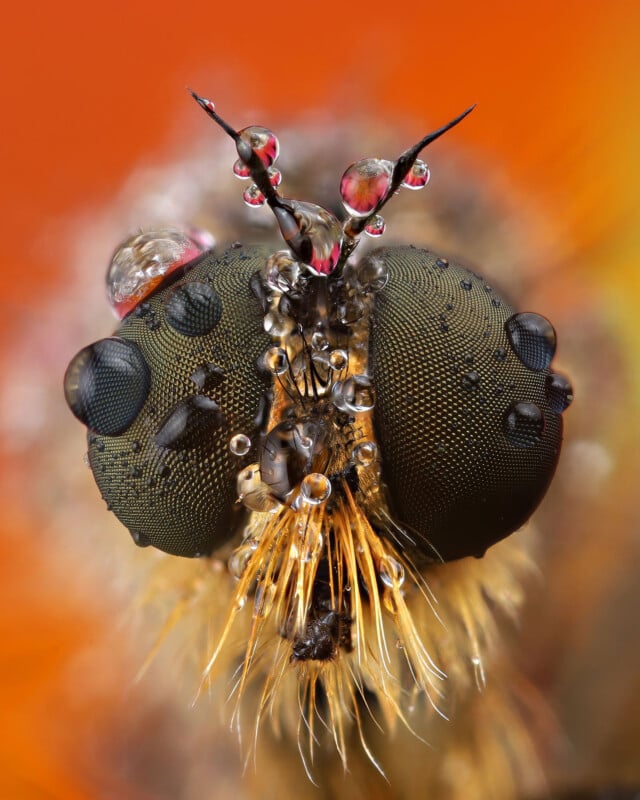 Dew-Covered Robber Fly
Dew-Covered Robber Fly 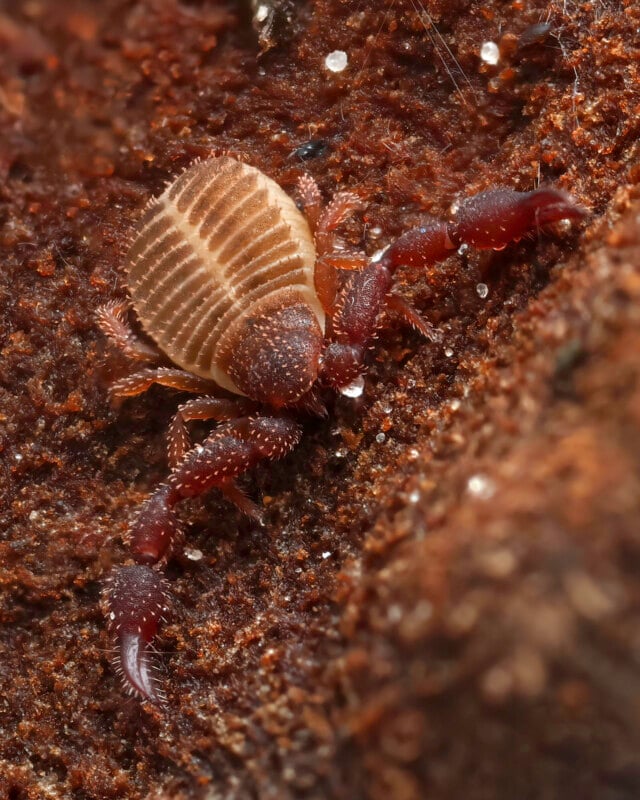 Pseudoscoprion
Pseudoscoprion
Ekelenburg’s work has been featured widely in exhibitions and digital media outlets. Her macro photography has been exhibited in historical settings like Soestdijk Palace in the Netherlands and State Museum Het Muiderslot, located in a famous Dutch castle.
She’s worked with optics giant Canon, among other notable tech stalwarts, and shares her entomological enthusiasm via literature through a monthly column for the Dutch newspaper Tubantia Nieuws. Her work has also graced the cover of Natuurfotografie Magazine as well as the top spot of an Affinity Photo Spotlight.
Ekelenburg has also garnered more than 750,000 followers on Instagram and has been selected to serve as a jury member for numerous photography contests, including the upcoming Close-Up Photographer of the Year 7 (CUPOTY) competition.
Ekelenburg also uses her outreach to educate and inspire others. She hosts macro photography workshops, online and in idyllic garden settings, to share her passion with attendees from around the world, while offering editing tips on her website. Most importantly, her work inspires awe and stewardship of a vibrant world by taking viewers on a journey full of “wonder, fascination, and curiosity.”
More from Eklenburg can be found on her website and Instagram while prints are available on her web shop.
Image credits: Marit van Ekelenburg
